This site is part of various affiliate programs. Links may give us a small compensation for any purchases you make, at no additional cost to you. Please read the disclaimer policy for full details.
If you don’t have time to read this article, then the best 85mm lens for Canon is the Sigma 85mm f/1.4 DG HSM Art for the EF Mount and the Canon RF 85mm f/1.2 L for the RF mount.
If you are into portraits and a 50mm just doesn’t cut it, stepping up to an 85mm lens is the next logical step.
The 85mm lens is still within the short telephoto range, which makes it easier for you to communicate with your model/subject, and it doesn’t compress the perspective much.
With longer telephoto lenses, like 200mm, the background and the subject’s facial features are compressed, often feeling slightly flat.
Most portrait photographers stay between 35mm and 85mm focal range but opt for wider aperture prime lenses.
If you shoot Canon, a variety of 85mm lenses are available for both EF and RF mounts and lenses that can be adapted from EF to RF mount using one of Canon’s own EF to RF adapters.
So, let’s take a look at the best 85mm lenses for Canon!
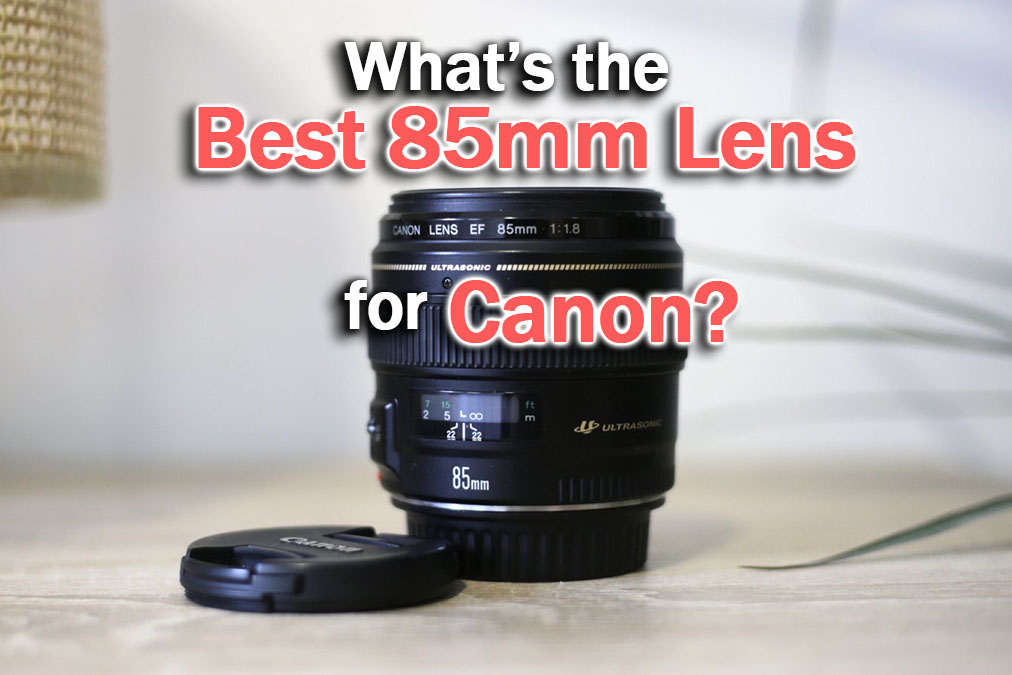
The Best 85mm Lens for Canon EF Mount: Sigma 85mm f/1.4 DG HSM Art
EF Mount 85mm Lens
- Excellent image quality, in the top three on the market
- Effectively no chromatic aberration
- F/1.4 aperture, and exceptionally sharp at it
- Excellent control over ghosting and flaring
- Cheaper than the competition
The Best Canon 85mm Lens for RF Mount: Canon RF 85mm f/1.2 L
RF Mount 85mm Lens
- The best image quality on the market
- Rich and true-to-life color and contrast rendition
- F/1.2 maximum aperture, and it is exceptionally sharp at f/1.2
- Nice weather sealing by Canon L standards
- No chromatic aberration
Comparison Table of 85mm Lenses for Canon
Lens | Mount | Pros | Who's it for? | Check Price | |
[Best 85mm Lens for Canon] | Canon EF | Top three for image quality & value for money | Those wanting L glass without the price tag | ||
Canon RF | Best image quality on the market | Pro portrait photographers who don't mind the price | |||
Canon EF | Image stabilization & weather sealed | Run and gun photographers working outdoors | |||
Canon RF | Can shoot macro | Budget portrait lens for mirrorless Canon cameras | |||
[Best Budget 85mm Lens] | Canon EF | Excellent price to performance ratio | Every photographer wanting a step-up from the 50mm lens | ||
Canon EF | Good build quality | Those on a really tight budget | |||
Canon EF | Decent CA control if stopped down | Portrait photography beginners | |||
Canon EF | Built like a tank & gives a soft, dreamy photo | Those looking for a dreamy, soft focus portrait lens |
Canon 85mm Lens Reviews
1. Sigma 85mm f/1.4 DG HSM Art [Best 85mm Lens for Canon]
- Specifications:
- Mount: Canon EF
- Elements / Groups: 14 elements in 12 groups
- Diaphragm Blades: 9 blades (circular)
- Closest Focusing Distance: 0.85m / 2.79 ft
- Max Magnification: 0.117x
- Autofocus Type: Ring Type Hypersonic Motor
- Image Stabilization: No.
- Filter Thread: Ø86 mm
- Dimensions: 126.2mm x Ø 94.7 / 5.0 in. x Ø 3.7in.
- Weight: 1,130g / 2.49 lbs.
Sigma ART lenses are the pinnacle of lens design made by Sigma, and the 85mm f/1.4 ART is no exception. When it was released in 2016, it was sharper than any 85mm lens. It beat even the Zeiss Otus.
Image Quality
Given the fact that it was the sharpest lens up until a couple of years ago, the Sigma 85mm f/1.4 Art is exceptionally sharp. Nowadays, it still holds up well, being surpassed by one or two lenses in total.
The lens is incredibly sharp, wide open, with a slight sharpness fall-off in the corners.
The center to corner sharpness equalizes at f/4, where the lens is the sharpest.
Vignetting is also controlled exceptionally well, with the lens exhibiting 1.5 stops of vignetting when wide open, but that vignette is gone if the lens is stopped down to f/2. Which is great.
The RF 85mm f/1.2 L is probably the sharpest 85mm lens on the market. It is sharp throughout the frame when wide open, with a little sharpness fall-off towards the corners. But the corners are still plenty sharp.
When stopped down, the lens is incredibly sharp throughout the entire frame.
The lens exhibits very low levels of lateral chromatic aberration, which slightly decreases when the lens is stopped down to f/4.
But the CA is so small that it is not really an issue. Moreover, there is no significant distortion with this lens, and it is nearly perfectly rectilinear.
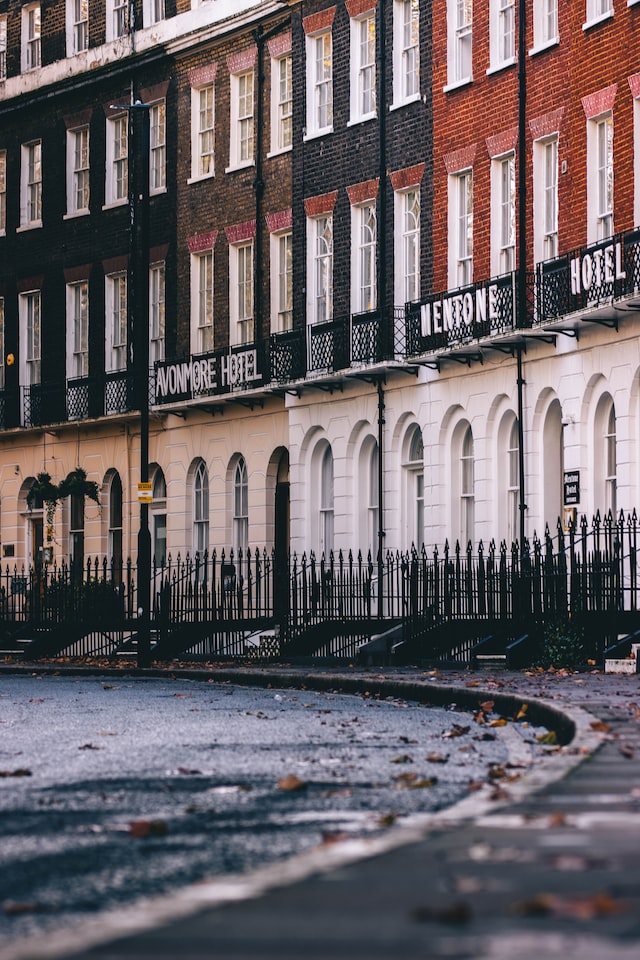
Build Quality
The lens is big and sturdy, just like any Sigma Art lens. It is made from a combination of metal and rugged plastic alloys, which means it can handle some rough treatment.
The mount is made from metal, so it won’t be a weak point.
The rubber is of high quality. Yet, rubber rings on Sigma lenses are known to deteriorate faster than on Canon or Nikon lenses, for example. Luckily, they are readily available as spare parts and can be replaced easily.
Most of the lens body is the focusing ring. The ring is mechanically coupled, infinite, and provides a full-time manual focus override.
Since it is a third-party manufacturer, Sigma doesn’t have the Autofocus algorithms of the camera makers. Therefore with DSLR cameras, the autofocus can be a bit inaccurate in some unique situations. However, with mirrorless, that issue is gone.
Who is the Sigma 85mm f/1.4 DG HSM Art for?
Sigma targets portrait photographers that can’t afford Canon L series glass with this lens. Closely competing with the best of the best but at ⅓ of the price.
- Pros:
- Excellent image quality, in the top three on the market
- Nice color and contrast rendition
- Effectively no chromatic aberration
- Excellent control over ghosting and flaring
- Excellent build quality
- F/1.4 aperture, and exceptionally sharp at it
- Cheaper than the competition
- Cons:
- No image stabilization
- No weather sealing
Read More:
2. Canon RF 85mm f/1.2 L [Best 85mm Lens for Canon RF Mount]
- Specifications:
- Mount: Canon RF
- Elements / Groups: 13 elements in 9 groups
- Diaphragm Blades: 9 blades (circular)
- Closest Focusing Distance: 0.85m / 2.79 ft.
- Max Magnification: 0.12x
- Autofocus Type: Ring-type USM
- Image Stabilization: No.
- Filter Thread: Ø82 mm
- Dimensions: 117.3mm x Ø 103.2mm / 4.61 in. x Ø 4.06 in.
- Weight: 1.195g / 2.63 lbs.
There are two variants of this lens, which is a first for Canon. The regular RF 85mm f/1.2 L is what you would expect from a premium Canon glass.
However, the DS version of this lens is designed for people that want ultra smooth background blur without bokeh balls, and that smooth bokeh comes at a $300 price premium.
Image Quality
There isn’t such a big difference between peak sharpness when the lens is stopped down versus when the lens is wide open, which is great.
Chromatic aberration is so well controlled that you probably can’t find it in most high-contrast scenarios.
There is a little vignetting when wide open, but it is almost completely gone when stopped down to f/1.8. That is excellent.
The non-DS variant’s bokeh balls are lovely, soft, and not too distracting. You can see some cat’s eyes shaped bokeh balls on the edges.
Photos with this lens will have outstanding contrast and micro contrast, with true-to-life colors even when you expect washed-out colors due to glare or flare.
Flaring and ghosting are nearly absent even if you don’t use the supplied lens hood. Even in the most extreme scenarios, you will get nice contrast throughout the image.

Build Quality
Canon is known for making its premium lenses tough, probably the toughest on the market. The RF 85mm f/1.2 L isn’t an exception. The lens is heavy and bulky, partly because it is built like a tank.
It looks modern and ergonomic, even with the added weight from the huge glass elements. Moreover, in L glass fashion, it is weather sealed.
It has a metal mount ring and a body made from a combination of plastic and metal to reduce weight. Make no mistake, the body can take a beating. Canon doesn’t joke around regarding building quality on L series lenses.
Like all RF lenses, it features a control ring that can be mapped to control various settings, like the ISO.
Who is the RF 85mm f/1.2 L for?
With such a high price point, the RF 85mm f/1.2 L is designed for pro portrait photographers who want the utmost quality with as few sacrifices as possible.
Moreover, the DS variant of the lens gives photographers an option to choose what kind of bokeh they want.
- Pros:
- The best image quality on the market
- Rich and true-to-life color and contrast rendition
- No chromatic aberration
- Excellent control over ghosting and flaring
- Fantastic build quality
- F/1.2 maximum aperture, and it is exceptionally sharp at f/1.2
- Nice weather sealing by Canon L standards
- Cons:
- Expensive
- Bulky
3. Canon EF 85mm f/1.4L IS USM
- Specifications:
- Mount: Canon EF
- Elements / Groups: 14 elements in 10 groups
- Diaphragm Blades: 9 blades (circular)
- Closest Focusing Distance: 0.85m / 2.79 ft.
- Max Magnification: 0.12x
- Autofocus Type: Ring-type USM
- Image Stabilization: Yes.
- Filter Thread: Ø 77 mm
- Dimensions: 105.4mm x Ø 88.6mm / 4.14 in. x Ø 3.48 in.
- Weight: 950g / 2.09 lbs
Before Canon decided to move entirely to mirrorless and the RF mount, they released what was considered the ultimate DSLR 85mm lens. It is probably the only high-end image stabilized 85mm lens with an aperture of f/1.4.
Image Quality
Canon went all out when it came to the last EF L glass, and this 85mm is no exception. It is sharp throughout the frame, with the corners losing some sharpness.
According to DXO, it is slightly sharper than the Sigma 85mm f/1.4 DG HSM Art. In reality, you won’t be able to see the difference, and it is sharpest at f/5.6, where it increases the corner-to-corner sharpness significantly.
Moreover, the sharpness in practice will be even better, especially in low light conditions, due to the image stabilization that will correct 4 stops worth of camera shake.
Vignetting is controlled quite well. When the lens is wide open, it exhibits a -1.8EV vignette, which is excellent. Usually, in cases like this, the vignette goes well beyond -2.0EV
Chromatic aberration is well controlled, although not as well as the Sigma, but it is still very low. Usually, the CA will be about 1 pixel large, which can be easily corrected in post-production.
Optical distortion is practically nonexistent, so that is not an issue at all. The small amount of distortion that is present can be corrected in post-production without any penalties.
Of course, the lens renders colors nicely, rich, and true to life. Moreover, the image is contrasty with good micro contrast.

Build Quality
The 85mm f/1.4L is built like a tank in typical Canon L fashion. Metal mount and high-grade engendering plastics are used to create the body of the lens. Make no mistake, rigidity wise high-grade plastics protect internal mechanisms and glass better than metal since they can flex and deflect energy instead of absorbing it.
It feels ergonomic in hand, and the weight is distributed nicely.
Who is the Canon EF 85mm f/1.4L IS USM for?
Since it is weather sealed, rugged, and stabilized lens, it targets run and gun photographers that shoot in various conditions.
Slightly more expensive than the Sigma 85mm f/1.4 DG HSM Art, but for the extra cost, you get more consistent autofocus, 4-stop image stabilization, and weather sealing. The price bump is more than justified.
- Pros:
- Second best image quality on the market
- Has Image Stabilization
- Little to no chromatic aberration
- Contrast and color rendition are superb
- Max f/1.4 aperture with exceptional sharpness
- Nice weather sealing by Canon L standards
- Cons:
- You will need an EF to RF adapter to use it on a mirrorless camera
4. Canon RF 85mm f/2 STM
- Specifications:
- Mount: Canon RF
- Elements / Groups: 12 elements in 11 groups
- Diaphragm Blades: 9 blades (circular)
- Closest Focusing Distance: 0.35m / 1.14 ft.
- Max Magnification: 0.5x
- Autofocus Type: STM
- Image Stabilization: Yes.
- Filter Thread: Ø 67 mm
- Dimensions: 90.5mm x Ø 78mm / 3.56 in. x Ø 3.07 in.
- Weight: 500g / 1.10 lbs.
Being the budget option in the RF lineup, the RF 85mm f/2 can’t compete with the RF 85mm f/1.2. However, you will get a very sharp lens for the price.
Image Quality
The RF 85mm f/2 STM Macro has excellent image quality overall.
Wide open, it is pretty sharp, with very little sharpness fall-off towards the corners. That is very respectable for a budget lens.
You will see a gradual sharpness increase as you stop down the lens, up to somewhere around f/5.6. After that, you’ll start seeing the effects of diffraction.
Chromatic aberration and vignetting are very well controlled, nothing you can’t correct for in Lightroom or Capture One.
You will find a little bit of pincushion distortion, which shouldn’t be a problem if you shoot portraits. The distortion might be visible if there are straight lines in your photos. But you can quickly correct that in post-production as well.
Since the lens is image stabilized, you will avoid sharpness loss due to camera shake. This is a common issue with lenses that are more on the telephoto side.
Even with fast shutter speeds, slight sharpness can be lost due to camera shake, and an IS lens helps mitigate that.
Moreover, because it can focus close-up at up to 35cm from the front of the lens with a 0.5x magnification, it is well suited for macro and detail shots, and the lens handles that exceptionally well. There is no sharpness loss nor chromatic aberration increase at close distances. It works great.
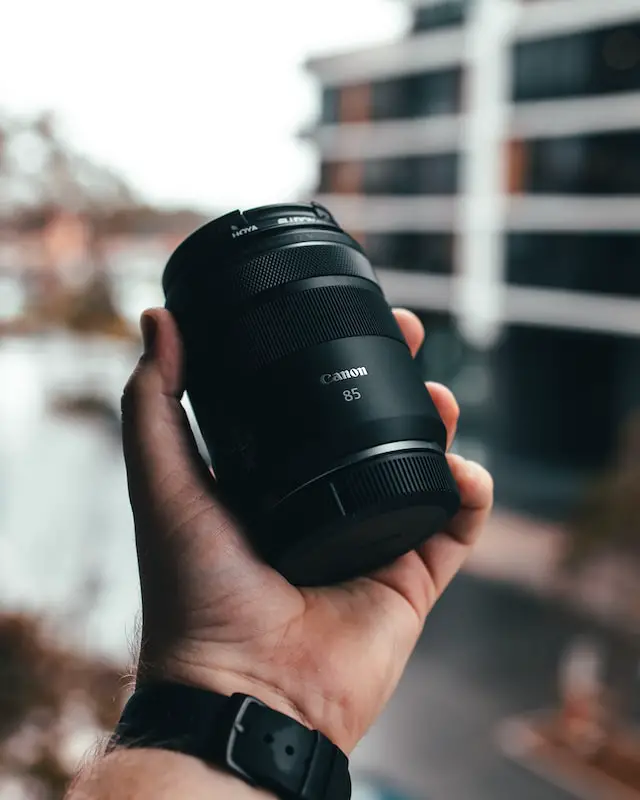
Build Quality
Even though it is not a Canon L lens, it is still well built. It won’t take the beating that an L lens would, but it will take some harsh love.
The lens is mainly made of high-quality plastics, and it feels solid and well-balanced in hand. And because it weighs only 500 grams, it is suitable for single-hand shooting too.
The focus ring has a lengthy throw which is suitable for videographers that want to rack focus.
As with all RF lenses, the lens features a control ring, which means you can manipulate a setting you map it for, like the ISO or exposure compensation. .
Who is the Canon RF 85mm f/2 STM Macro for?
If you own a Canon mirrorless camera and you want a budget portrait lens, then this is the lens for you.
It is also an excellent lens for wedding photographers since you can do portraits and macro details of the rings and other things with the same lens.
- Pros:
- Great image quality for the money
- Well-controlled chromatic aberration
- Can shoot macro
- Decent build quality
- Has very good Image Stabilization
- Great price
- Cons:
- No weather sealing
- Relatively small maximum aperture at f/2
- The front element protrudes when focusing
5. Canon EF 85mm f/1.8 USM
- Specifications:
- Mount: Canon EF
- Elements / Groups: 9 elements in 7 groups
- Diaphragm Blades: 8 blades
- Closest Focusing Distance: 0.85m / 2.79 ft.
- Max Magnification: 0.13x
- Autofocus Type: USM
- Image Stabilization: No.
- Filter Thread: Ø 58 mm.
- Dimensions: 72mm x Ø 75mm / 2.81 in. x Ø 2.95 in.
- Weight: 425 g / 0.94 lbs.
Believe it or not, this lens is 30 years old. It was released back in 1992, and it hasn’t been updated ever since. At least not for the EF mount. However, Canon designed the lens quite well back then, so it is still a relevant lens for portrait photographers 30 years later.
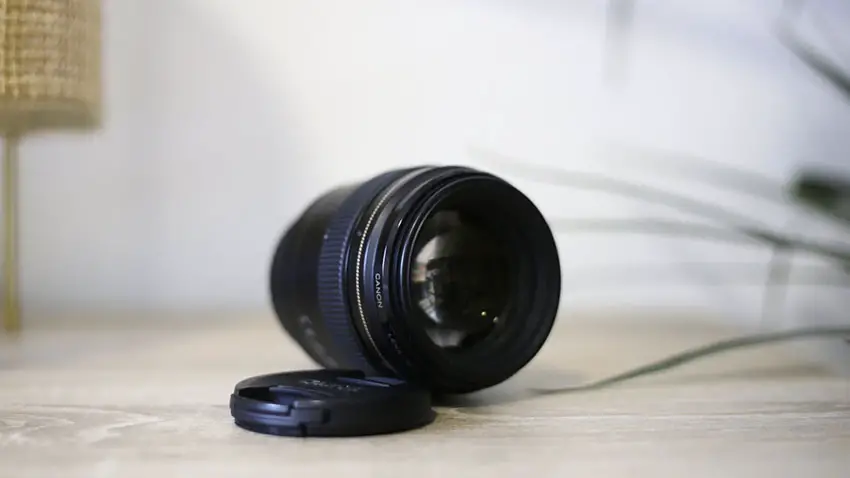
Image Quality
Being a 30 years old lens, and primarily designed for film cameras, in some aspects the lens shows its age.
Make no mistake, the lens is sharp, even wide open. Corner sharpness is average for today’s standards, but if you are a portrait photographer, that shouldn’t matter too much. If you shoot landscapes with it, you will notice the sharpness fall-off.
Stopping the lens down to f/2.8 will improve overall sharpness, but it won’t improve the corners much.
Color and contrast are great, the shadows aren’t washed out, and skin tones are accurate. It lacks some micro contrast, but nothing that can be a deal breaker.
There is some chromatic aberration when wide open. It is a 30-year-old lens, but stopping it down to f/2.2 removes most of it, and the rest can be easily removed in post-production.
Flaring and ghosting are well controlled. You won’t see too much flare, but you will find some glaring when the light hits the lens just right.
Overall, as a 30-year-old lens, it performs pretty well.
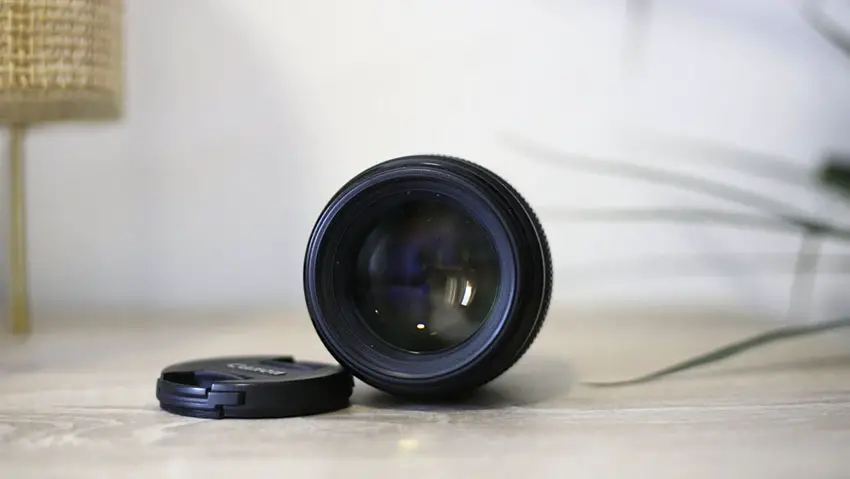
Build Quality
The lens is mainly made from plastic on a metal mount. The plastic is rigid, however, and it can take a beating.
Being a budget lens, it is not weather sealed and doesn’t feature image stabilization.
In general, this lens doesn’t like dust. If you use the lens in dusty environments, you will notice that dust can get between the lens elements, and you won’t be able to clean it yourself. It will be a trip to the service center.
The USM motor, however, is quite fast. Faster than most high-end lenses, and it focuses pretty quickly and consistently.
Who is the Canon EF 85mm f/1.8 USM for?
If you shoot a Canon DSLR and the ‘nifty fifty’ just isn’t enough for your portraiture needs, then this lens is the next logical step, with the Canon 85mm a staple of my portrait photography.
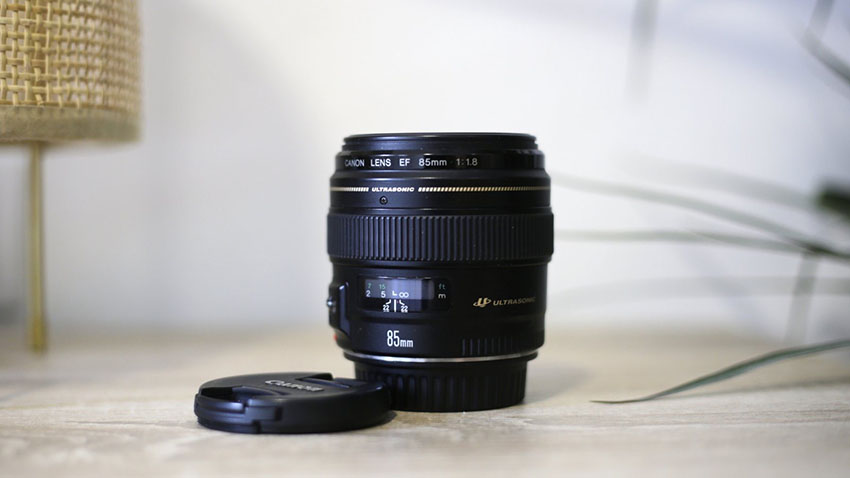
- Pros:
- Excellent image quality for the money
- Rich and true-to-life color and contrast rendition
- Well-controlled chromatic aberration
- Decent control over ghosting and flaring
- Decent build quality
- Quick and accurate autofocus motor
- Excellent price for the performance
- Cons:
- No weather sealing so dust can be a problem
- Relatively small maximum aperture at f/1.8
- No image stabilization
6. Samyang AF 85mm f/1.4 EF
- Specifications:
- Mount: Canon EF
- Elements / Groups: 9 elements in 7 groups
- Diaphragm Blades: 9 blades
- Closest Focusing Distance: 0.9m / 2.95 ft.
- Max Magnification: 0.11x
- Autofocus Type: DLSM
- Image Stabilization: No.
- Filter Thread: Ø 77 mm
- Dimensions: 72mm x Ø 88mm / 2.81 in. x Ø 3.46 in.
- Weight: 485 g / 1.07 lbs
Samyang or Rokinon provide great budget lenses. Don’t be confused by the two names. Rokinon is a brand created by Samyang and owned by Elite Brands, for the North American market, and they are essentially the same company originating from South Korea.
With a little bit of research, you’ll notice that Samyang and Rokinon have an RF version of the same lens, but it is discontinued. I’m guessing there are some legal issues there as Canon keeps their RF mount relatively closed.
Since Samyang discontinued the RF version, this review will focus on the EF version.
Image Quality
The first thing you’ll notice about this lens is its sharpness. It is not as sharp as the RF 85mm f/1.2, but it is plenty sharp for the price. It is sharper than the Canon EF 85mm f/1.8 USM, without a doubt. The problem is that you lose sharpness the closer you get to your subject, and that characteristic alone might put off many photographers.
The weirdness continues when it comes to chromatic aberration.
The expected behavior is that the more you stop down the lens, the less chromatic aberration you get. With this lens, it is the opposite. The more you stop it down, the more CA you get.
Additionally, the CA is quite visible in the out-of-focus areas. In a decent amount of cases, you won’t be able to remove it from there. Especially if you focus on a closer distance.
Moreover, the lens has decent control over vignetting, with the vignette being around -2.2EV in the corners. If you stop down the lens to f/2, the vignette drops down to barely noticeable -1EV.
The bokeh, while often plagued by chromatic aberration, is otherwise lovely. It isn’t too distracting and exhibits a bit of cat-eye shape towards the edges when wide open.
Color rendition is a bit different than what you might be used to with Canon lenses; it might feel a bit dull, but it is not too bad. It is contrasty in general but lacks micro contrast. Often it feels like you have reduced the clarity slider in Lightroom.
As with most 85mm lenses with simple design, there is not much distortion, if any. So that is not an issue.
Bear in mind that this lens is prone to flare. You might love the flare or hate it, which is a matter of taste.
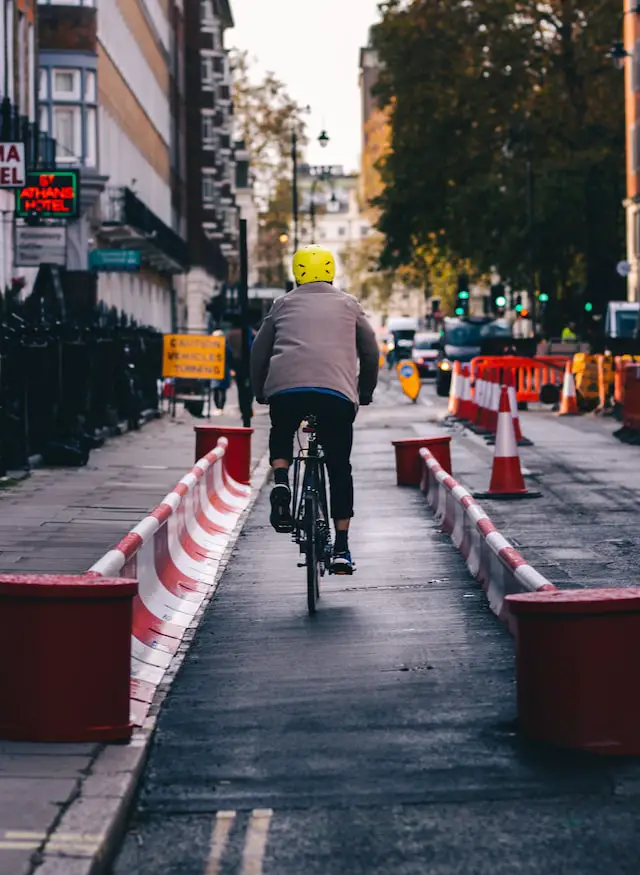
Build Quality
The lens is built well. It has a metal mount, and the lens components are all snug in a nice plastic weather-sealed barrel. How good is the weather sealing? Only the bravest of photographers will know. But at least rubber gaskets keep water and dust out of the internal elements.
You will find that the autofocus is not the quickest, but it is quick enough. The issue is that it is inconsistent.
It seems that the autofocus isn’t always adequately calibrated out of the factory, and you will need the lens station (sold separately) to calibrate it yourself. Reports show that even the lens station can’t help with the autofocus calibration, and the lens has to go back to the shop or service center.
If you use the lens with a mirrorless camera or a camera with DPAF, then the autofocus is quite accurate. It can hunt a little in some situations but won’t impair your photography.
There is no image stabilization either, nor full-time manual focus override.
Who is the Samyang AF 85mm f/1.4 for?
If you really need an f/1.4 lens and your budget is so tight that you are willing to sacrifice some autofocus performance and close-up sharpness, then this lens is the right one for you.
- Pros:
- Decent image quality for the money
- Decent control over chromatic aberration for the subject in focus
- Weather sealed
- Good build quality
- Quick and accurate autofocus motor if used with DPAF
- Excellent price for the performance
- Cons:
- A lot of chromatic aberration in out-of-focus areas
- Autofocus can be desperately inaccurate and might need calibrating via a separately sold lens station
- Colors and micro contrast can be dull
7. Meike 85mm f/1.8 AF
- Specifications:
- Mount: Canon EF
- Elements / Groups: 9 elements in 6 groups
- Diaphragm Blades: 9 blades
- Closest Focusing Distance: 0.85m / 2.79 ft.
- Max Magnification: 0.13x
- Autofocus Type: Loud and Slow
- Image Stabilization: No.
- Filter Thread: Ø 67 mm
- Dimensions: 75mm x Ø 79mm / 2.95 in. x Ø 3.11 in.
- Weight: 420 g / 0.925 lbs
Chinese manufacturers are known for putting out super cheap camera gear. The trend started with cheap but relatively good flashes, which compete pretty closely with the more prominent brands but at a fraction of the price.
The same principle applies to lenses. Meike is one of the few Chinese manufacturers producing lenses, offering a budget 85mm f/1.8 lens.
Image Quality
Right out of the gate, given the sub $200 price point of the lens, we have to manage expectations. The image quality is decent for the money.
If you don’t use a camera with a sensor that is around 20 megapixels, the lens is sharp in the center and gets progressively softer as you move towards the corners.
There is a good amount of purple and green chromatic aberration, and it gets progressively worse in the corners.
Stopping it down to f/2.8 resolves some of the corner sharpness and a decent amount of chromatic aberration, and the lens is sharpest in the center at f/5.6. At f/11, the lens is quite sharp both in the corners and in the middle, and it starts losing sharpness if you stop it down further.
Everything thus far points towards an old optical design akin to lens designs from the 1980s.
Additionally, you will find some vignetting when shooting this lens wide open, but that is mainly resolved when you stop it down. Distortion is well corrected, though.
Bear in mind that these issues might be more visible on a crop body or a higher resolution camera, like the Canon R5 or 5DSR.
All in all, you can take some good portraits with this lens. You just might need to fiddle with the photo a bit in post-production.
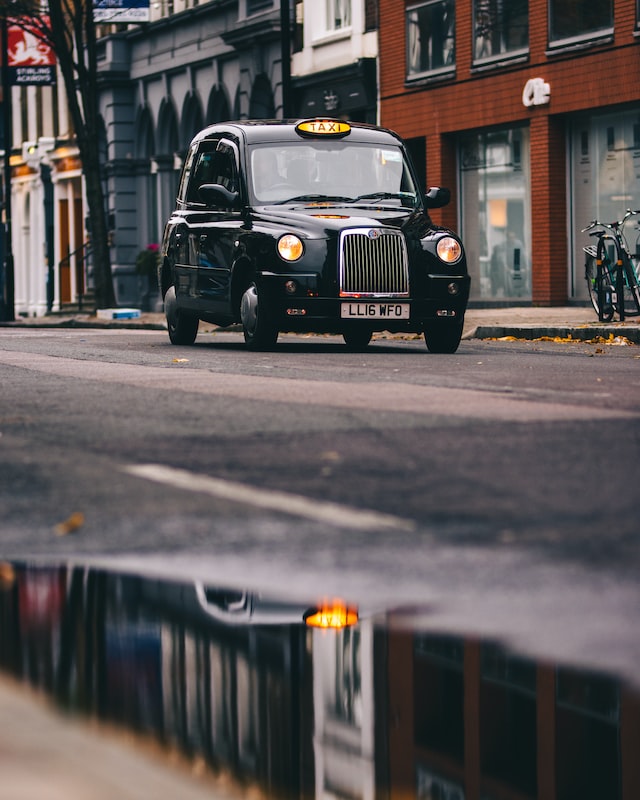
Build Quality
The lens has a metal mount and a plastic body. The plastic feels nice, but bear in mind that it is a budget lens after all. It might not be the toughest on the market.
There is no weather sealing as well, but you can’t expect that at this price point.
The autofocus motor is loud and slow. The first Canon 50mm f/1.8 had a noisy autofocus motor, but at least it was decently quick and accurate. Sadly, this motor is neither fast nor accurate.
Depending on the camera, the autofocus motor might not work at all in Live View, or it will work accurately. The whole autofocus situation is hit or miss depending on your camera and the use scenario.
Who is the Meike 85mm f/1.8 AF for?
If you just got started in photography and you want an 85mm lens for portraits, but your budget is minimal, this is the lens for you. It is not perfect, but it will get the job done most of the time.
- Pros:
- Image quality is completely fine
- Decent control over chromatic aberration if stopped down two to three stops
- Good build quality for the money
- Very cheap
- Cons:
- A lot of chromatic aberration with high-resolution or crop cameras
- Autofocus is hit or miss depending on the camera
- Autofocus in live view either works great or bugs out the entire camera, depending on the camera
8. Canon EF 85mm f/1.2L USM II
- Specifications:
- Mount: Canon EF
- Elements / Groups: 8 elements in 7 groups
- Diaphragm Blades: 8 blades
- Closest Focusing Distance: 0.95m / 3.11 ft.
- Max Magnification: 0.113x
- Autofocus Type: USM
- Image Stabilization: No.
- Filter Thread: Ø 72 mm
- Dimensions: 84mm x Ø 91.5mm / 3.30 in. x Ø 3.60 in.
- Weight: 1025 g / 2.26 lbs
As an update to the old EF 85mm f/1.2L, which dates back to 1989, the EF 85mm f/1.2L II improves on many aspects. The second generation of the lens was released back in 2006, which is quite old.
Make no mistake, Canon glass has the tendency to be relevant for decades, and this lens is no exception.
Image Quality
Being an f/1.2 lens that is more than 15 years old, the age of the optics is visible.
It is sharp but nowhere near as sharp as the RF variant. Corners are on the soft side, too, especially when you use the lens at f/1.2. However, the sharpness improves significantly if you stop it down just slightly. Both in the center and in the corners.
Then again, this lens is known for the soft and dreamy look it provides when wide open, akin to the first variant and dating back to the super rare Canon 50mm f/1.0 L.
Pair that slightly dreamy look with the nice looking bokeh, and that is a recipe for a nice and gentle looking portrait. Which is what this lens does best.
There is some chromatic aberration in the out-of-focus areas, which can be distracting in some instances.
Moreover, you will find a -2.0EV vignette, which is not that bad considering the aperture and age of the lens. When stopped down even slightly, the vignette improves considerably, with it being completely gone by f/2.8.
The slight chromatic aberration that is present in high contrast scenarios can be easily removed in Lightroom.
Distortion is minimal, but if you shoot a scene with parallel lines, you will notice it. But, it can be easily corrected in post-production.
Having a big front element and being produced in 2006 means that this lens will be prone to ghosting and flaring. Some photographers love flares, and some hate them. Whether the significant flaring works for you is up to you, and you can remove most of it by using the included lens hood.
Due to the ghosting and flaring, often, the lens can lose some contrast, but otherwise, the colors are great, and the micro-contrast is sufficient for a lens that old.
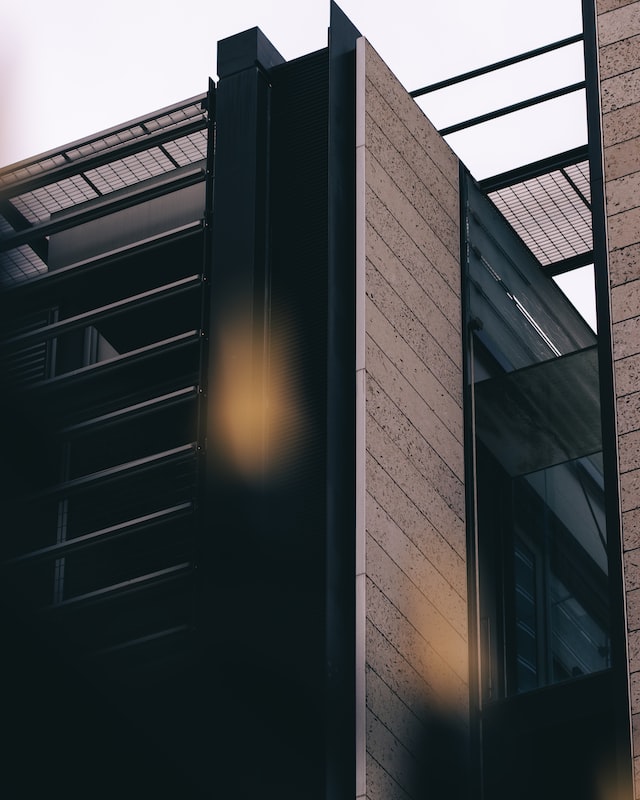
Build Quality
Being an old L lens design, the body is made of metal and feels extremely sturdy. The glass elements inside are big and heavy, and with that, the lens feels quite dense. It is small in size but quite heavy.
Since it was designed in the early 2000s, it doesn’t feature weather sealing, something you would find in pretty much every Canon L lens nowadays. Canon could have updated that in the meantime, but for some reason, they didn’t.
The autofocus motor is an HSM one, and you can hear it working hard to move those big glass elements. As a result, the focus speed isn’t the fastest, but the lens focuses accurately through the viewfinder and with Live View / DPAF.
Who is the Canon EF 85mm f/1.2L USM II for?
The lens is a specialty one, meaning it is not for everybody. If you crave sterile sharpness without any flaring, this lens is not for you.
If you want a lens with a dreamy character, where everything is a bit soft and yet detailed, then this is the right glass for you.
- Pros:
- Great control over chromatic aberration for in focus areas
- Decent image quality
- Built like a tank. All metal construction
- Accurate autofocus
- Bright f/1.2 maximum aperture. Out-of-focus areas/bokeh looks nice
- It provides a bit of a dreamy look when wide open
- Excellent color rendition with good micro-contrast
- Cons:
- Out-of-focus areas can exhibit chromatic aberration that might be hard to remove
- Autofocus can be a bit slow for today’s standards but not a dealbreaker
- It has a decent amount of ghosting and flaring with bright light sources, but most of it can be fixed by using the included lens hood
Final Thoughts on Canon 85mm Lenses
You can choose from many 85mm lenses on the market, but any in this review will give you a solid 85mm lens for your Canon camera that is sure to last for many years.
Bear in mind that the lens, regardless of the focal length, is just a tool, and you need to pick the right tool for the job.
Our job is to help and educate you on what each tool (lens) does best and make the decision easier for you. It is up to you to decide which lens works best for your photography style and needs.
In short, the best RF 85mm lens is the Canon RF 85mm f/1.2L USM, while the best budget RF 85mm lens would be the Canon RF 85mm f/2 STM.
On the other hand, the best Canon EF 85mm lens would be the Sigma 85mm f/1.4 DG HSM Art tied with the Canon 85mm f/1.4L IS USM. The best budget EF lens would be a tie between the good old Canon EF 85mm f/1.8 USM and the Samyang AF 85mm f/1.4 EF mount.
EF Mount 85mm Lens
Further Reading
An 85mm prime lens should be just one part of every portrait photographer’s arsenal.
You should also think about wider angle lenses to capture environmental portraits and 50mm lenses for headshots.
There are several resources on this site to help you decide on the ideal focal length for you and your photography.
Check out our pages that compare photos of the same scene taken at different focal lengths:
The above articles all contain examples of the same scene shot at the different focal lengths, making these really useful comparison articles.
You should also check out our comparisons on:
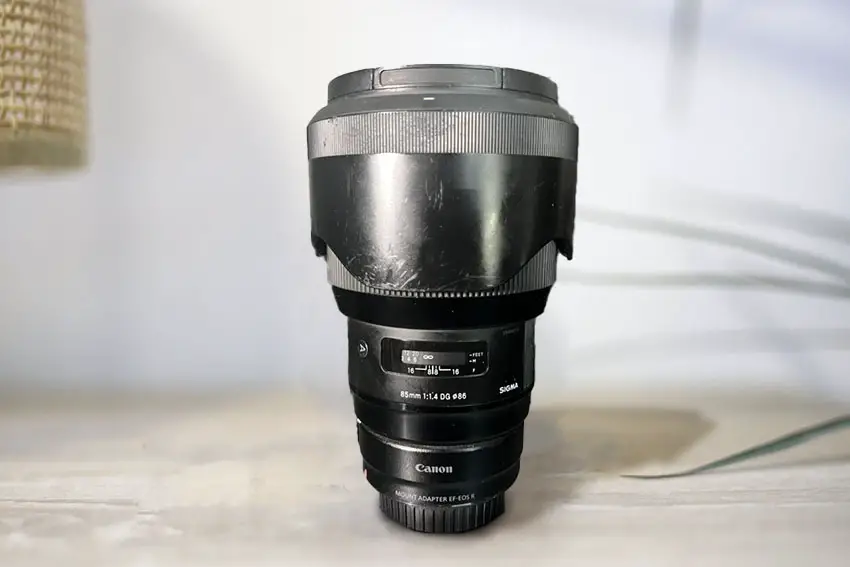
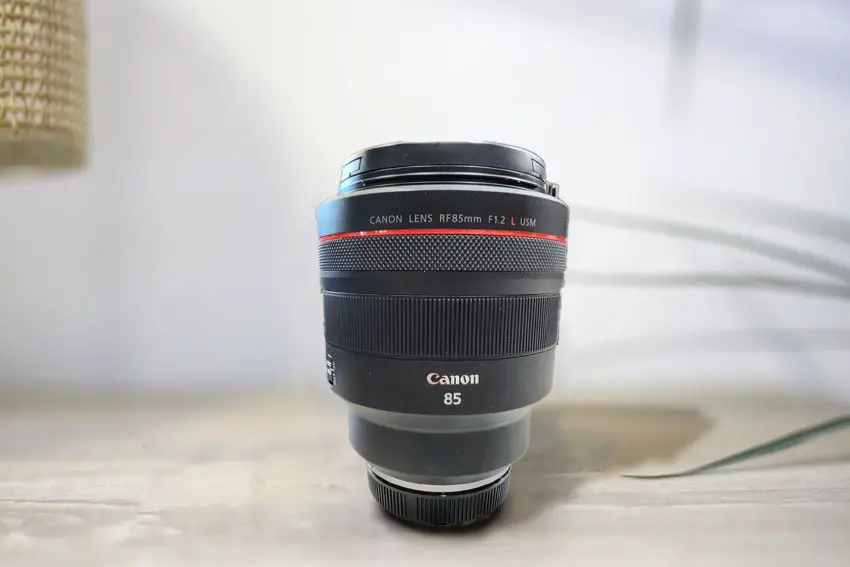


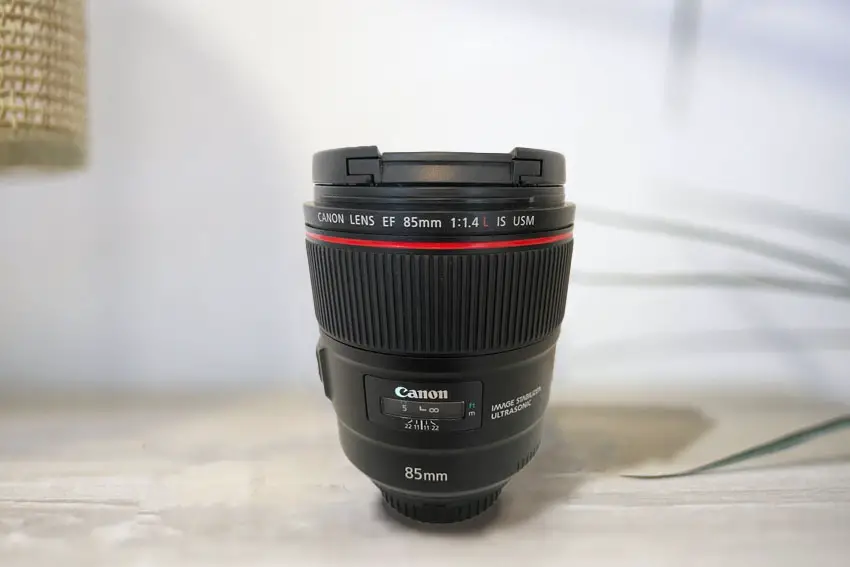
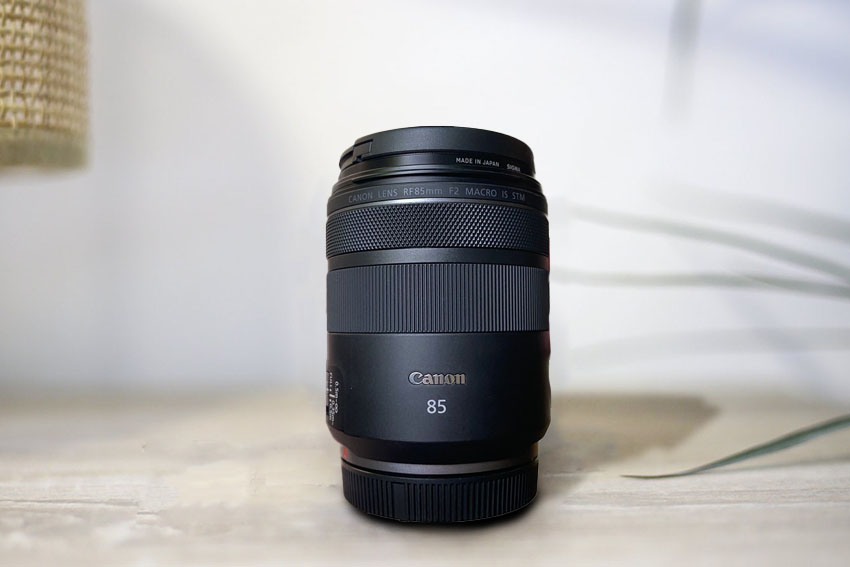
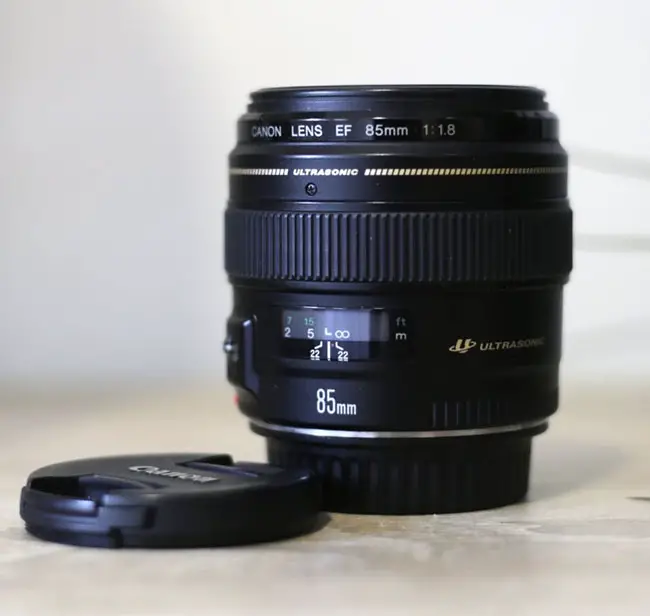
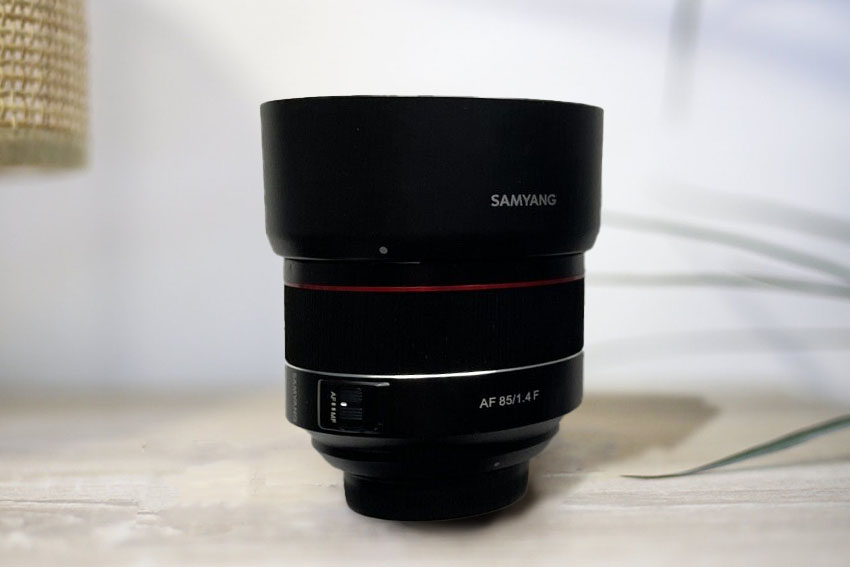
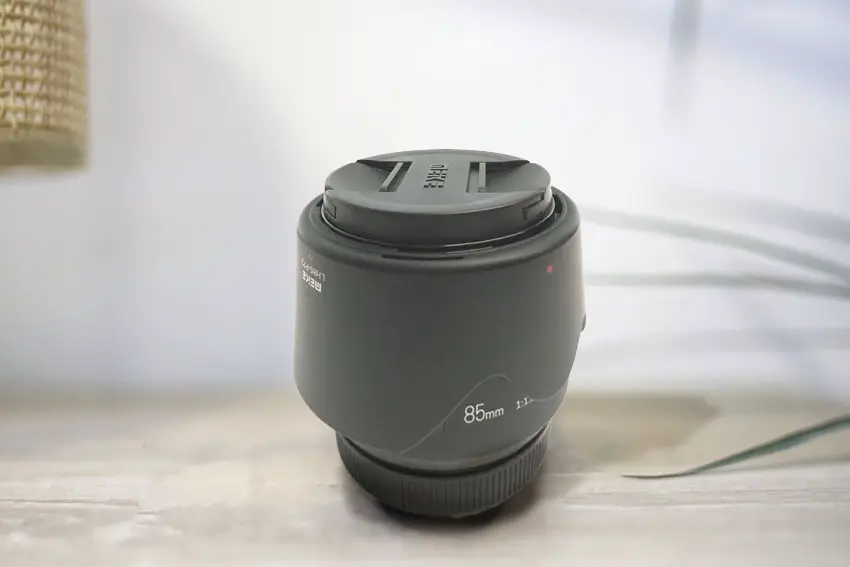
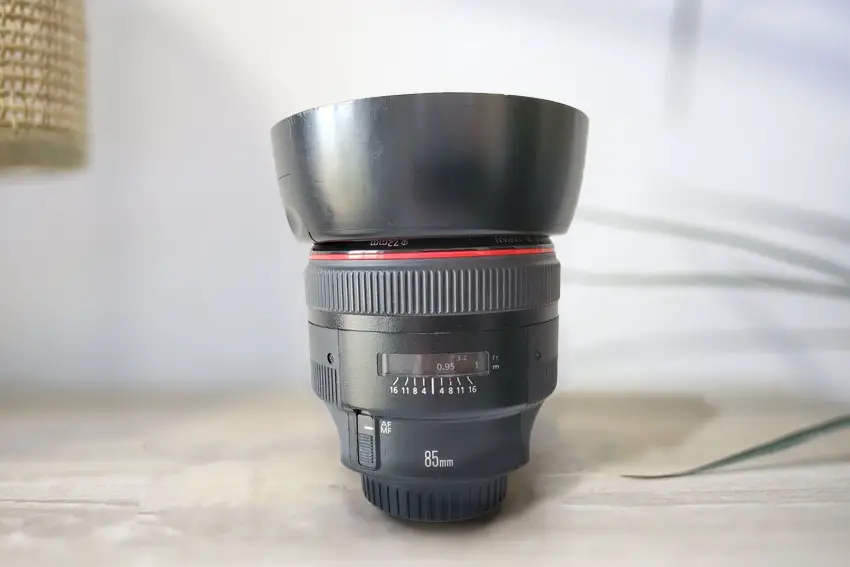






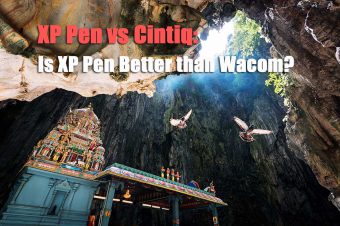
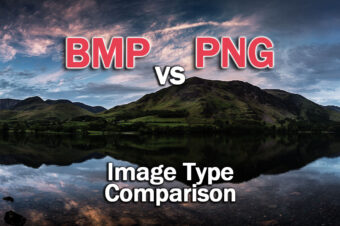



Leave a Reply